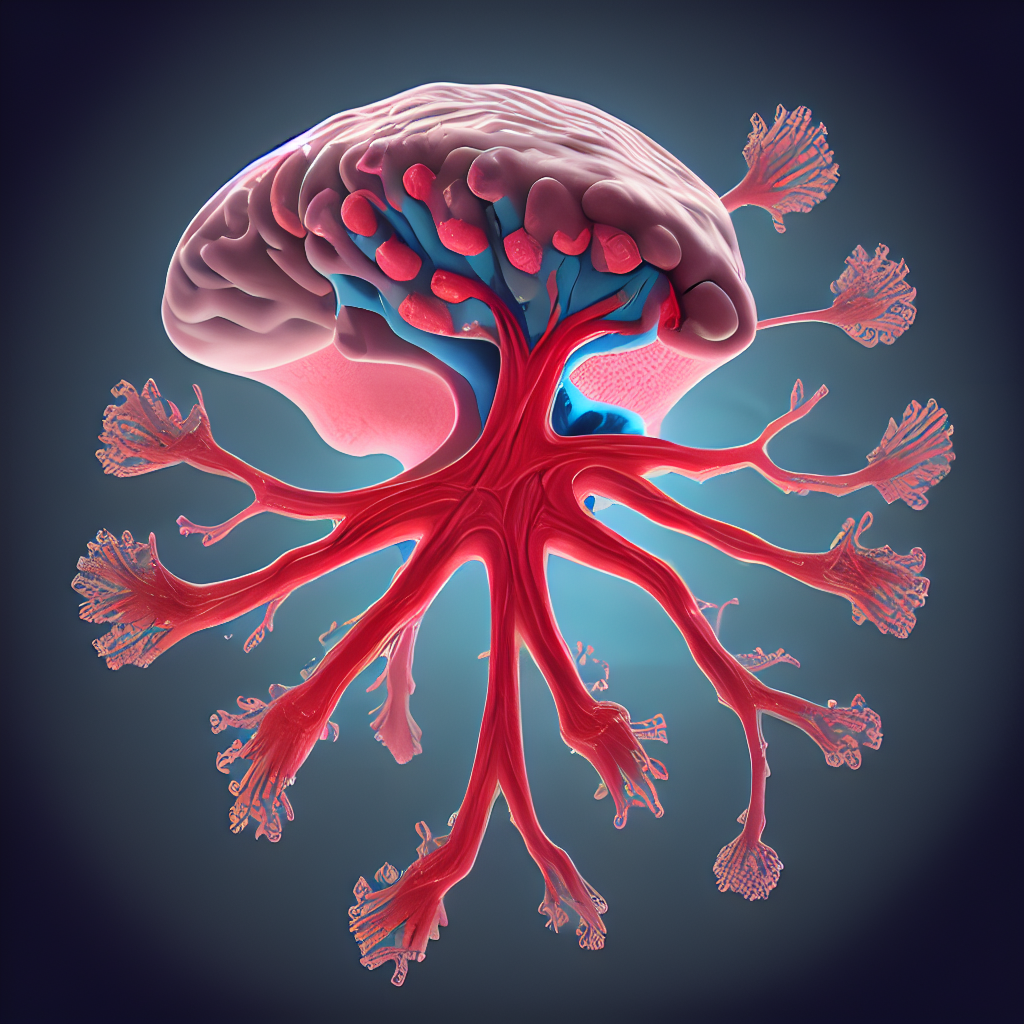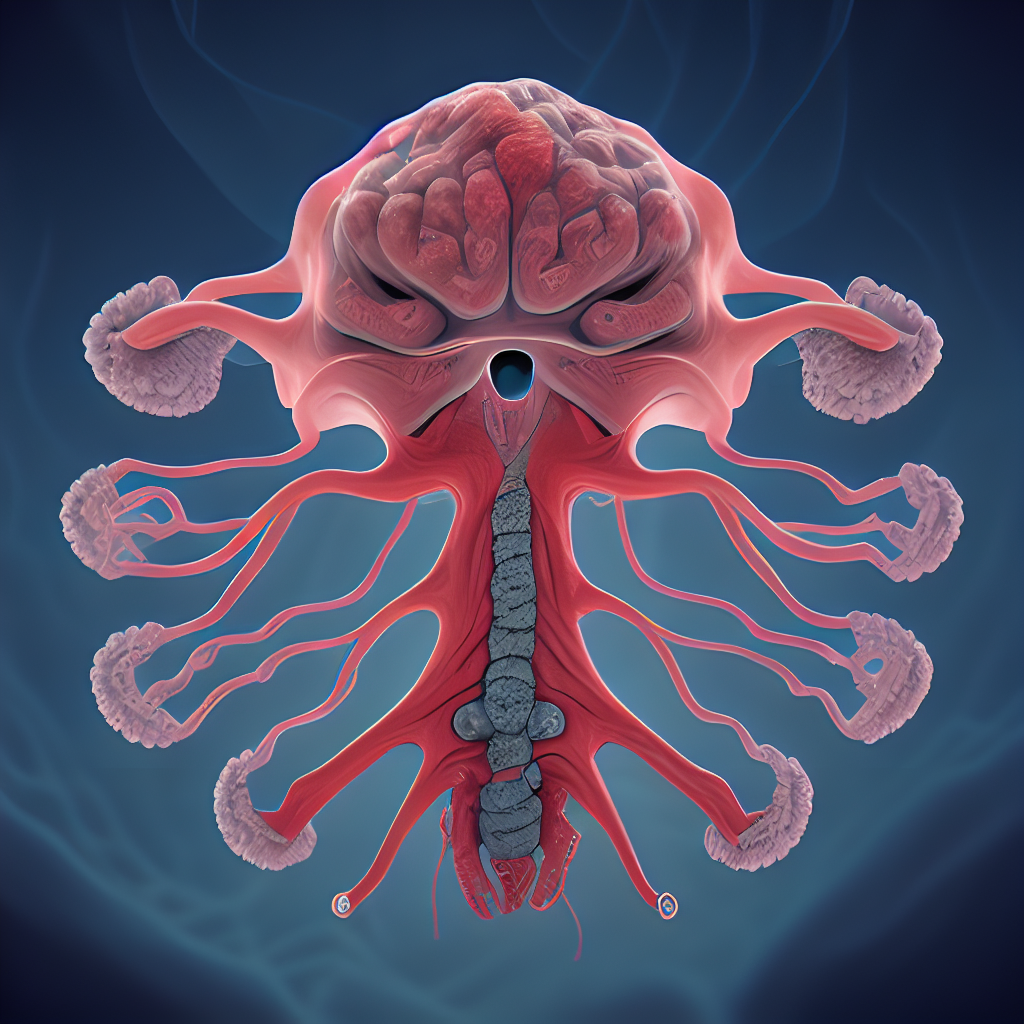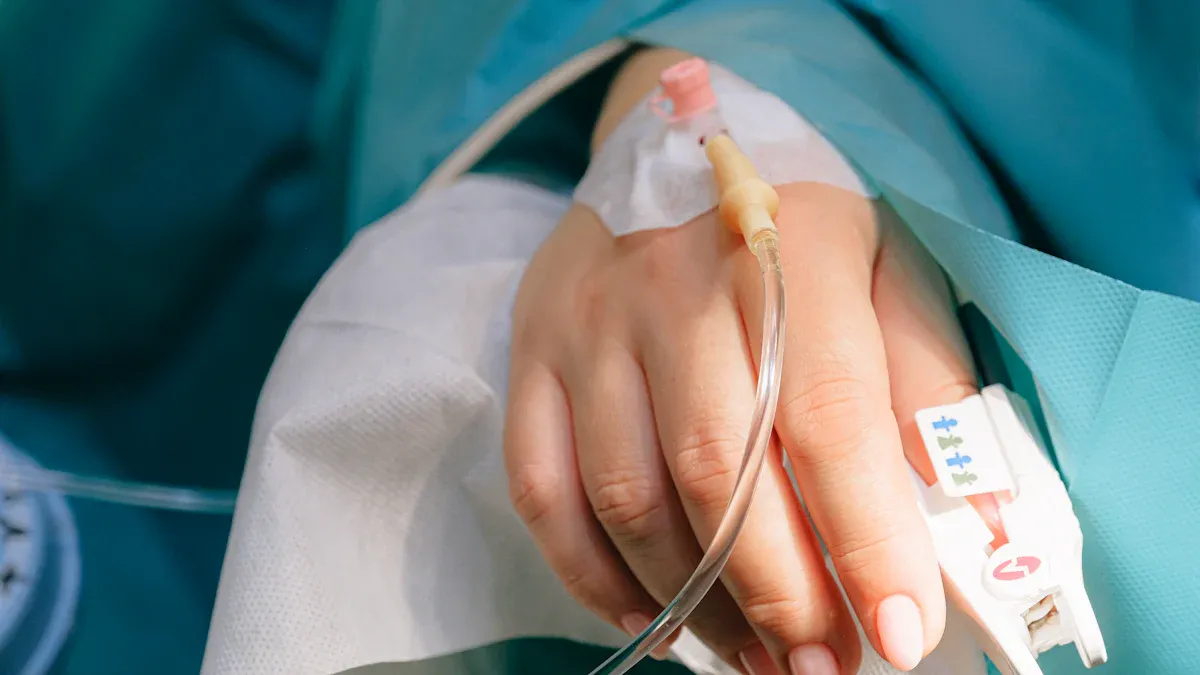Understanding Neurofibroma and Its Symptoms

Neurofibroma develops as a benign tumor in your peripheral nervous system. These tumors often appear as soft lumps on or beneath your skin. You may notice them more frequently if you have neurofibromatosis type 1 (NF1), a genetic condition. While these growths are non-cancerous, they can sometimes cause discomfort or affect nearby nerves. Recognizing the signs early helps you manage the condition effectively and seek appropriate care.
Key Takeaways
Neurofibromas are non-cancerous lumps caused by NF1. Spotting symptoms early helps manage them better.
Common signs include light brown skin spots, skin bumps, and nerve problems. See a doctor if you notice these signs.
Regular doctor visits are important to check neurofibromas. They can find problems early and make life better.
Surgery is often the best way to treat painful neurofibromas. Talk to your doctor about all treatment choices.
Learning about NF1 and getting support can help you cope. Joining support groups can give helpful advice and resources.
What is Neurofibroma?

Definition and Characteristics
Neurofibroma refers to a benign tumor that develops along your nerve cells. These tumors are often linked to neurofibromatosis, a group of inherited conditions. While most neurofibromas remain harmless, their symptoms can vary depending on the tumor's type, size, and location.
Here are some key characteristics of neurofibromas:
They grow along nerve cells, often affecting the skin or deeper tissues.
They are associated with neurofibromatosis type 1 (NF1), a genetic condition.
Most neurofibromas are non-cancerous, but about 10% of plexiform neurofibromas may become malignant.
Types of Neurofibroma
Neurofibromas can appear in different forms. Each type has unique features that affect how it looks and feels.
Type of Neurofibroma | Description |
|---|---|
Localized neurofibromas | Flesh-colored nodules, typically pea-sized, soft and squishy, found on various body parts. |
Diffuse neurofibromas | Appears as a raised area of reddish-colored skin. |
Plexiform neurofibromas | Large lumps that protrude from the body, resembling a bag of worms under the skin. |
Localized neurofibromas are the most common type. You might notice them as small, soft bumps on your skin. Diffuse neurofibromas, on the other hand, often cause a raised, reddish area on the skin. Plexiform neurofibromas are larger and can feel like a cluster of worms beneath the skin. These are more likely to cause complications, as they sometimes grow deeper into tissues.
Note: Many people mistakenly associate neurofibromatosis with Joseph Merrick, the "Elephant Man." However, he had Proteus syndrome, not NF1. Addressing this misconception helps reduce stigma for those living with NF1.
Symptoms of Neurofibroma

Common Physical Symptoms
Neurofibroma often presents with noticeable physical changes. You may observe:
Six or more café-au-lait spots, which are light brown patches on the skin.
Two or more neurofibromas or one plexiform neurofibroma.
Freckling in areas like the armpits or groin.
Growths on the iris of the eye, known as Lisch nodules.
Skeletal abnormalities, such as scoliosis.
Café-au-lait spots are a key indicator. Their number and size can help predict the likelihood of neurofibromatosis type 1 (NF1).
Number of CALMS | Probability of NF1 Signs | Age of Confirmation |
|---|---|---|
6 | 40% chance within 5 years | By age 6 |
9 or more | 100% chance within 5 years | By age 10 |
Pain or discomfort may also occur, especially if the tumors press against nearby tissues.
Tip: If you notice these symptoms, consult a healthcare provider for evaluation.
Neurological Symptoms
Neurofibroma can affect your nervous system. Symptoms often include:
Nerve compression, leading to pain or tingling sensations.
Weakness or numbness in the affected area.
Other neurological issues, such as headaches or neuropathy, may arise. In some cases, conditions like epilepsy or cerebrovascular disease can develop.
Symptoms by Neurofibroma Type
Plexiform Neurofibroma Symptoms
Plexiform neurofibromas often cause more severe symptoms. You might experience:
Disfigurement or changes in sensation.
Muscle weakness, trouble walking, or a burning sensation.
Urinary issues, such as difficulty controlling or emptying your bladder.
These symptoms can significantly impact your daily life.
Diffuse Neurofibroma Symptoms
Diffuse neurofibromas typically appear as raised, reddish areas on your skin. They may cause mild discomfort but rarely lead to severe complications.
Understanding these symptoms helps you recognize potential issues early. Early diagnosis improves management and reduces the risk of complications.
Causes of Neurofibroma
Genetic Factors
Neurofibromatosis Type 1 (NF1)
Neurofibromatosis type 1 (NF1) plays a significant role in the development of neurofibromas. This condition occurs due to mutations in the NF1 gene, which is responsible for producing a protein called neurofibromin. Neurofibromin helps regulate cell growth. When the NF1 gene mutates, it disrupts this regulation, leading to tumor formation.
Individuals with NF1 have one mutated copy of the NF1 gene in every cell.
Tumors form when a second mutation occurs in specific nerve-surrounding cells during a person’s lifetime.
These mutations often result in the loss of NF1 function in Schwann cells, which initiates neurofibroma growth.
Evidence Description | Findings |
|---|---|
Loss of NF1 function in Schwann cells initiates neurofibroma formation. | Neurofibromas develop along peripheral nerves and do not migrate to distant organs. |
Peripheral nerves are essential for neurofibroma tumorigenesis. | Nf1-/- SKPs can form tumors in sciatic nerves but not in subcutaneous tissues. |
Inherited vs. Spontaneous Mutations
You may inherit NF1 mutations from a parent, or they may arise spontaneously. If one parent has NF1, there is a 50% chance of passing it to their child. However, about half of all NF1 cases result from new mutations that occur without a family history. These spontaneous mutations can still lead to the same symptoms and complications as inherited cases.
Other Contributing Factors
While genetic factors are the primary cause, other elements can influence neurofibroma formation. The nerve microenvironment plays a crucial role. Interactions between Schwann cells and surrounding neural components can promote tumor growth. Hormonal changes, especially during puberty, may also trigger the development of dermal neurofibromas. Maintaining nerve health and addressing hormonal imbalances could help reduce risks.
Tip: If you notice unusual growths or symptoms, consult a healthcare provider to explore potential causes and receive proper care.
Diagnosis and Treatment of Neurofibroma
Diagnosis Methods
Physical Examination
Your doctor will start with a physical examination to check for visible signs of neurofibroma. They may look for skin changes, such as café-au-lait spots or lumps, and assess any neurological symptoms like weakness or numbness.
Imaging Tests (e.g., MRI, CT scans)
Imaging tests play a crucial role in diagnosing neurofibromas. These tests help identify the location, size, and type of tumors.
MRI scans are highly effective for evaluating internal lesions, such as deep plexiform neurofibromas or spinal cord tumors.
Short T1-inversion recovery MR images are useful for follow-up evaluations.
T2-weighted images can help distinguish between benign and malignant tumors.
Evidence Type | Description |
|---|---|
MRI Effectiveness | Useful for assessing mediastinal masses, spinal cord tumors, and deep lesions. |
Diagnostic Utility | Accurately estimates tumor volume and aids in follow-up. |
Malignancy Indicators | Identifies rapid growth or features suggesting malignancy. |
Biopsy for Confirmation
If imaging tests suggest a neurofibroma, your doctor may recommend a biopsy. This involves removing a small tissue sample for microscopic examination. A biopsy confirms the diagnosis and rules out malignancy. Genetic testing may also be performed to identify mutations linked to neurofibromatosis.
Treatment Options
Monitoring and Observation
For small, asymptomatic neurofibromas, your doctor may suggest regular monitoring. This approach ensures that any changes in size or symptoms are detected early.
Surgical Removal
Surgery is often the preferred treatment for neurofibromas causing pain, disfigurement, or functional issues. Removing the tumor can improve your quality of life.
Aspect | Details |
|---|---|
Benefits | Enhances appearance and reduces discomfort. |
Risks | May include nerve damage or other complications, depending on the tumor's location. |
Prognosis | Most neurofibromas do not recur after surgery. |
Other Interventions (e.g., Radiation, Medication)
In some cases, alternative treatments may be necessary:
Radiation therapy can target tumors that are difficult to remove surgically.
Medications, such as Bevacizumab, may help manage symptoms like hearing loss in specific cases.
Chemotherapy is used for malignant tumors or growing pediatric brain tumors.
Tip: Discuss all treatment options with your healthcare provider to determine the best approach for your condition.
Living with Neurofibroma
Prognosis
Benign nature of most neurofibromas
Most neurofibromas are benign, meaning they do not spread to other parts of your body. If you have neurofibromatosis type 1 (NF1), you can expect a nearly normal life expectancy when complications are absent. Proper management and regular monitoring can help you maintain a good quality of life.
Rare complications (e.g., malignancy)
In rare cases, complications may arise. Severe tumors or malignant transformations, such as malignant peripheral nerve sheath tumors (MPNSTs), can occur. These complications may shorten your lifespan if left untreated. However, with early detection and treatment, the risks can be minimized.
Time Frame | Survival Rate |
|---|---|
5 years | 85% |
10 years | 67% |
20 years | 38% |
Note: Regular checkups and imaging tests can help detect complications early, improving your long-term outlook.
Self-Care and Management
Regular medical check-ups
Regular medical evaluations play a vital role in managing neurofibroma. Annual checkups with a physician familiar with NF1 can help monitor symptoms and detect complications early. These evaluations often include:
Monitoring café-au-lait spots and other skin changes.
Annual eye exams to check for Lisch nodules or other complications.
Imaging tests to investigate any new or worsening symptoms.
By staying proactive, you can address potential issues before they become serious.
Coping strategies and emotional support
Living with neurofibroma can be emotionally challenging. You may benefit from connecting with support groups or seeking counseling. Professionals like clinical social workers, counselors, and therapists can help you manage stress and anxiety.
Here are some strategies to consider:
Educate yourself about NF1 to better understand your condition.
Stay physically active to improve overall health and manage symptoms.
Bring a trusted friend or family member to medical appointments for support.
Monitor for signs of cancer or other complications.
Tip: Joining a community of others with NF1 can provide valuable resources and emotional support.
Psychological and social support services, such as individual counseling or family therapy, can also help you navigate the challenges of living with a chronic condition.
Neurofibroma is a benign tumor that affects your peripheral nervous system. It often links to neurofibromatosis type 1 (NF1), a genetic condition. Early diagnosis helps you manage symptoms and avoid complications. Regular check-ups and monitoring play a vital role in improving your quality of life. If you notice unusual skin changes, lumps, or have a family history of NF1, consult a healthcare provider. Taking action early ensures better outcomes and peace of mind.
FAQ
What is the difference between neurofibroma and neurofibromatosis?
Neurofibroma refers to a benign tumor that grows on nerves. Neurofibromatosis is a genetic condition that causes multiple neurofibromas and other symptoms like café-au-lait spots. You can have a neurofibroma without having neurofibromatosis.
Can neurofibromas turn cancerous?
Most neurofibromas remain benign. However, plexiform neurofibromas have a small chance (about 10%) of becoming malignant. Regular check-ups help detect any changes early.
How do I know if I have neurofibromatosis type 1 (NF1)?
You may notice symptoms like six or more café-au-lait spots, freckling in unusual areas, or multiple neurofibromas. A doctor can confirm NF1 through genetic testing or a clinical diagnosis based on these signs.
Tip: Early diagnosis improves management and reduces complications.
Are neurofibromas painful?
Neurofibromas can cause pain if they press on nearby nerves or tissues. Plexiform neurofibromas are more likely to cause discomfort due to their size and location.
Can neurofibromas be prevented?
You cannot prevent neurofibromas caused by genetic factors like NF1. However, regular monitoring and early treatment can help manage symptoms and reduce complications.
Emoji Reminder: 🩺 Always consult your doctor if you notice unusual growths or skin changes.
See Also
Ependymoma: Key Symptoms You Need To Know About
Craniopharyngioma: Essential Features And Important Insights
Choroid Plexus Carcinoma: Symptoms And Treatment Options Explained
Exploring Causes And Symptoms Of Head And Neck Cancer
Recognizing Leiomyosarcoma: Symptoms And Key Identification Tips
